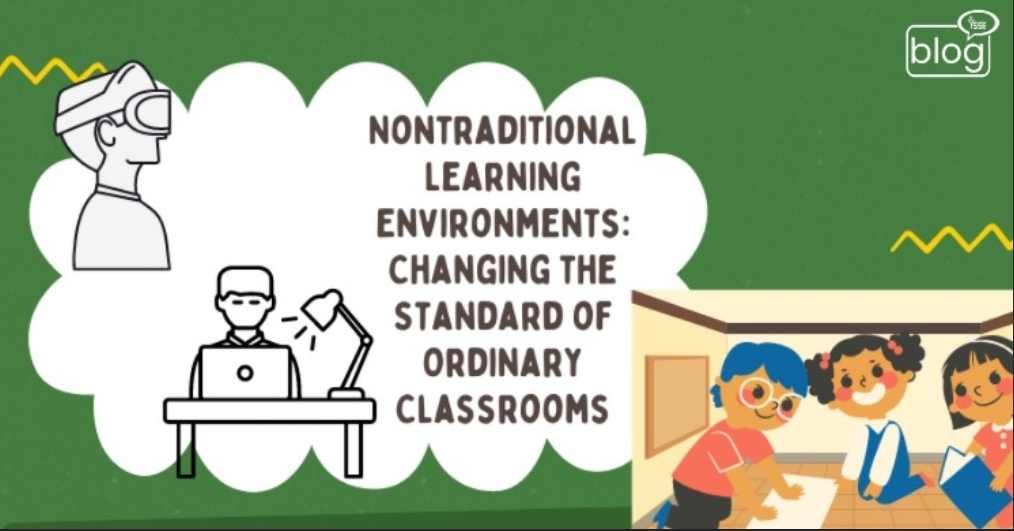Unusual learning spaces are redefining traditional classrooms in the rapidly evolving field of education.
By challenging the current status, the alternative environments hope to give the students a more dynamic educational experience.
So, let’s see how these non-traditional environments are influencing education in the future,
The usual classroom arrangements in which students are seated and face a single teacher is challenged by nontraditional learning places.
Collaborative areas and interactive tools are revolutionizing education by encouraging innovation, technology, analytical thinking, and teamwork.
- Student-focused method :
Nontraditional learning environments emphasize a student’s role as an active participant, whereas the traditional is a teacher-centered method.
- The Spread of Online Education :
Online learning platforms are offering degrees and courses have emerged as a result of the digital age.
It offers flexibility and accessibility to a wide area of learners including those who are remote or employed.
- Beyond Four Walls :
There are learning places outside of the typical classroom.
Students are given real-life experiences through outdoor classrooms, initiatives, and experiential opportunities. These things are encouraging experiential learning.
- Virtual Reality :
Virtual Reality can bring academic subjects to life but it can’t replace human interaction. It works as a supplement learning tool.
VR classrooms engage students in many learning experiences. Virtual Reality creates a digital environment and a 360-degree for users to experience that feels real.
- Podcasting Studios :
Podcasting is a new tool for education. Encouraging students to produce podcasts improves their narrative style and communication skills.
Student expression, information sharing, and a deeper knowledge of multimedia production are all made possible by podcasting studios in schools/ Universities.
- Game studios :
In a classroom students can transform into game studio teams with their creativity. It can add brainstorming sessions,project management and teamwork.
In a critical situation it can cultivate innovation and memorable experiences. It can enhance student engagement in the classroom.
- Flexible Classroom Designs :
It refers to such arrangements of different teaching styles, activities. Often incorporate movable furniture modular to facilitate communication and engagement between students and teachers. It’s goal is to create active learning experiences.
- Tech-Equipped Libraries :
Books, and modern libraries are becoming tech hubs. Libraries that are filled with digital tools become places where people may conduct research, code, and explore, giving students a diverse educational experience.
- Developing a Global Perspective
Students study in nontraditional environments where they are exposed to a variety of viewpoints, cultures, strategies, brainstorming ms and ideas.
Virtual connections and collaborative projects can add to the globalized educational experience.
Students who have this opportunity are better prepared for a society in which understanding and communication across cultural boundaries are crucial.
- Future Directions in Education
Nontraditional learning environments form a paradigm shift in the education system.
It is a fusion of traditional and nontraditional components that have emerged as the new norm as we look to the future.
The emphasis on flexibility using technology, and employing student-centered methods will continue in evolving the educational environment and preparing learners for the complexity of modern life.
A Non-traditional learning environment forces transformation that puts the existing educational institutions to the test.
These methods are laying the groundwork for a more diverse, dynamic, and globally linked learning environment by embracing flexibility, technology, and a student-centered approach.
To read more blogs like this, click here.
Writer
Nupur Akter
Intern
Content Writing Department
YSSE

